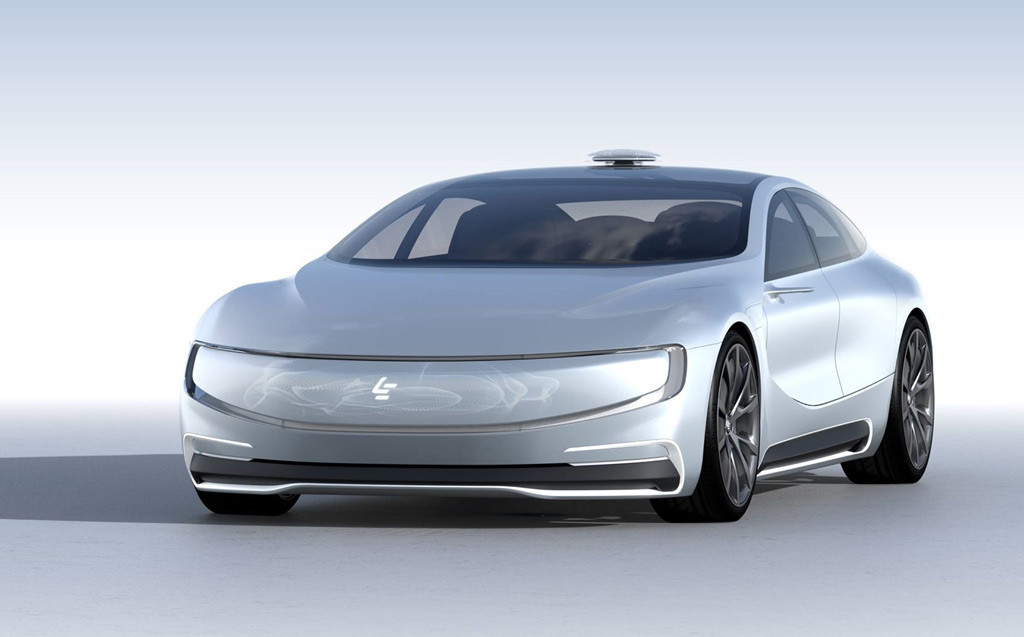During a press conference at the 2016 Consumer Electronics Show, Faraday Future announced plans to build its first electric car within two years.
Later in 2016, it selected a site for what it claimed would be a $1 billion electric-car factory to be built in North Las Vegas, Nevada.
But work at the site stopped late last year, and a new report suggests Faraday is significantly downsizing its production plans.
DON'T MISS: Faraday has 64,000 reservations: why they're different from Tesla's
The Chinese-backed startup is scaling back the size of the factory, pushing back its completion date, and cutting the number of models it plans to offer, according to a recent Reuters report.
What was once to be a 3 million square-foot factory will now measure closer to 650,000 square feet, and there is no chance of meeting the original completion date of "late 2017" previously mentioned by Faraday.
Nor will the smaller plant be able to meet the company's original annual-capacity estimate of 150,000 electric cars.

At the groundbreaking for Faraday Future's production facility in North Las Vegas (April 13, 2016)
The downsized plant may not open until 2019, and likely won't have the capacity to build more than 10,000 cars per year, Reuters reported, citing an anonymous source close to Faraday.
The company may still build larger volumes of cars, but not in the U.S.
According to the report, the majority of Faraday electric cars will be built in China, alongside cars for a sibling brand called LeSee.
ALSO SEE: Faraday Future unveils FF 91, its first production electric car; deposits open, no price given
This arrangement is made possible by Faraday's ties to Chinese billionaire Jia Yueting and his LeEco tech empire.
The LeSee name was first used on a concept car unveiled by Jia and LeEco at the 2016 Beijing Auto Show.
Last year, LeEco also bid for a license to establish an electric-car factory in the eastern Chinese city of Hangzhou.

LeEco LeSee concept, 2016 Beijing Auto Show
Reports at the time said the company planned to invest almost $2 billion in the factory, with the goal of building 400,000 electric cars per year.
But last November, Jia admitted in a letter to employees that LeEco was running out of cash.
MORE: Karma, Faraday plan large Chinese electric-car factories (Aug 2016)
Around the same time, Faraday shut down work at its Nevada factory site, amid a dispute with lead contractor AECOM over certain missed payments.
In addition to scaling back U.S. production plans, Faraday is also reportedly reducing the number of models it plans to build from seven to two.

Faraday Future FF 91
One will be the FF 91 crossover unveiled at CES 2017 last month, the other will be a second utility vehicle called the FF 81, apparently slotting below it in the lineup.
Under Faraday's naming scheme, the first number in a model's name denotes its place in the lineup.
Despite being the lower-level model, Faraday reportedly considers the FF 81 to be its Tesla Model X competitor.
That would seem to indicate the FF 91 will be a more exotic model, which does at least makes sense in the context of reports saying it will cost anywhere from $180,000 to almost $300,000.
_______________________________________________












